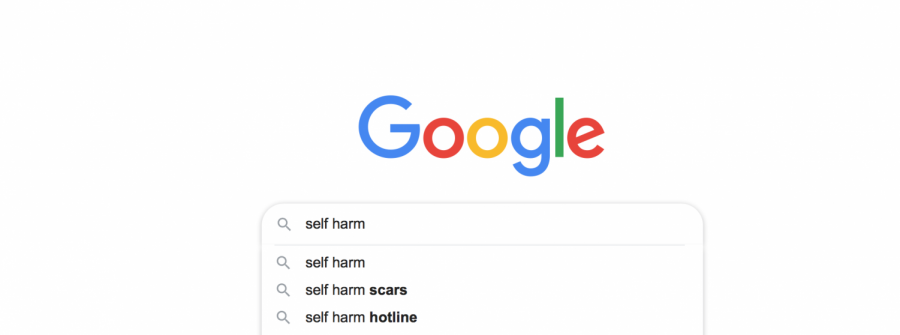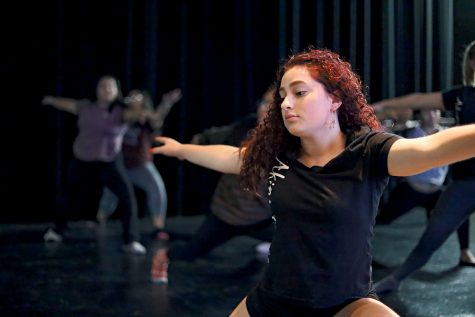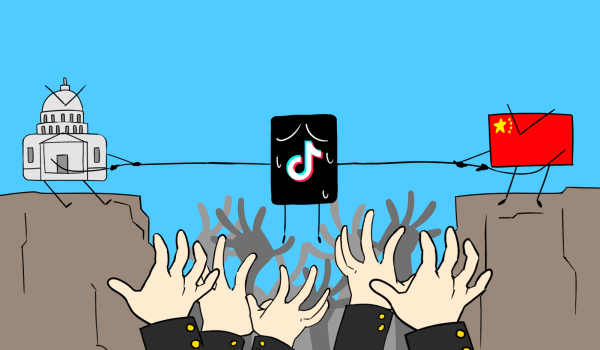Student web searches tracked, triggers safety checks
Mylo Bissell, photo Illustration
Austin ISD is using monitoring services to track students’ Internet searches for instances of keywords related to self-harm or harming others. If a student searches for these kinds of words on district-provided Chromebooks — even at home — it could trigger a welfare safety check from law enforcement, a counselor or an assistant principal.
February 25, 2020
To many people, a breach of online privacy can leave them feeling vulnerable and uncomfortable.
However, some are okay with the idea of someone tracking their online searches if the purpose is to keep people safe. The Austin school district is required by the federal Children’s Internet Protection Act (CIPA) to install monitoring programs on district-provided Chromebooks. These services monitor students’ Internet searches for instances of keywords related to self-harm or harming others. If a student searches for these kinds of words on district-provided Chromebooks — even at home — it could trigger a welfare safety check from law enforcement, a counselor or an assistant principal.
Many students are unaware that the district is monitoring their online searches even though this practice is built into the district’s “acceptable use policy” that students’ parents sign when they register their students to attend classes in Austin ISD. Some students have accidentally triggered these kinds of safety checks while researching school projects. And others have triggered these alerts as an immature joke when a friend borrows their laptop.
Senior Valeria Rangel shared her story of how this had happened to her.
“I was in Spanish class and I was reading something in this story and I wanted to know the significance of being burned alive. The next day I got called into the counselor’s office and they started asking me questions about how I was feeling. Then my counselor said ‘we saw this search on your Chromebook and we wanted to check if everything was okay.’ I had told them that I didn’t want to self-harm and that it was a misunderstanding.”
Some believe that this kind of monitoring can prevent harm and save lives in an age when mass school-shootings and student suicides prompted by cyberbullying seem to be on the rise. “I’m glad to know that the school had a procedure for students and that they are checking up on students that are crying out for help, and that the school can prevent things from happening,” Rangel said.
Austin ISD is currently tracking what you are searching as said in the “Monitored Use and Filtering” section in the Austin Independent School District Acceptable Use Guidelines says that AISD can monitor and filter what we do to make sure we’re not using the laptops for inappropriate search history that have contents like “obscene, pornographic, inappropriate for students, or harmful to minors.”
The only time police are ever involved is if an alert was received outside of the school day and we cannot get ahold of parent or guardian,
— Tina Salazar, Principal
Some schools use artificial intelligence technology to scan through thousands of words to find any inappropriate content; however, if anything related to self-harm pops up it will be sent and reviewed by a team in the district. This system is in place in order to protect the students from harming themselves or others before it occurs.
Assistant principals have recently begun explaining this monitoring to teachers who were unaware that students’ keyword searches were prompting administrators and law enforcement officials to investigate the flagged internet searches.
Akins Principal Tina Salazar said law enforcement would only be involved in the search occurred outside of school.
“The only time police are ever involved is if an alert was received outside of the school day and we cannot get ahold of parent or guardian,” she said. “Then the police do a welfare check to make sure the student is okay. If it happens during the school day our counselors speak to the student.”
Salazar said the monitoring can be helpful to find students who might be crying out for help.
“It’s okay not to be okay all of the time. That is normal,” she said. “It’s also okay to ask for help. We all need it at some point. So if you need help, ask. We are here for you.”
While the system is intended to keep students safe, some worry that this kind of monitoring can go too far. At the end of 2019, U.S. Senator John Cornyn from Texas advocated for a bill that would encourage school districts to invest in programs that detect “online activities of minors who are at risk of committing self-harm or extreme violence against others.”
Under the bill, almost all federally funded schools would be required to install software of this kind. There are already some school districts in Texas that use software to monitor our social media and look for any concerning posts. This is already a reality for schools in the Brazosport school district near Houston.
If you are experiencing thoughts of suicide or self harm call 1-800-273-8255 or text CONNECT TO 741741.
If you know of someone who is thinking of harming themselves go to www.austinisd.org/technology/digital-concern or Student Support Services














